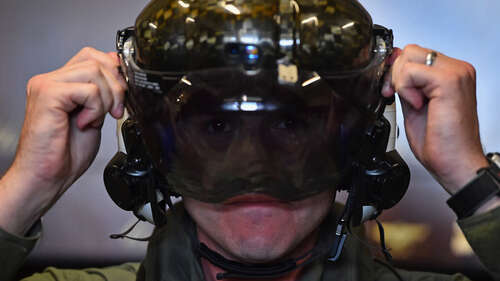
The F-35 is a fifth-generation fighter, and the helmet was designed with this in mind. The purpose of its integrated HUD and connection to the aircraft is simple: Everything related to flight and mission data appears on the display. This gives the pilot a 360-degree view of the battlespace by projecting everything around the plane to the pilot. If they look down at their legs, they will only see the terrain below their aircraft as if they’re flying Wonder Woman’s invisible jet, though this is somewhat limited.
Tech. Sgt. William Vass of the 419th Fighter Wing explained to the Air Force, “The pilot can look down through a portion of their wing and see what’s below. When they look toward the cameras embedded on the F-35 that image projects onto their helmet display.”
The role of the HDMS is to unite the pilot with their aircraft in ways never conceived of before. It includes a visor and bi-optical HUD with integrated night vision and image overlays. Each helmet is fitted to the pilot’s head and interpupillary distance, providing the best possible vision interface for each pilot. The helmet is fitted so perfectly that a change in pilot hairstyle requires a refitting — it’s that precise.
Fitting a pilot with an HDMS is a two-day process carried out by U.S. Air Force personnel. The fitting begins by measuring every aspect of a pilot’s head, including the distance between their pupils, ensuring their bi-optical HUD appears as a single image.

